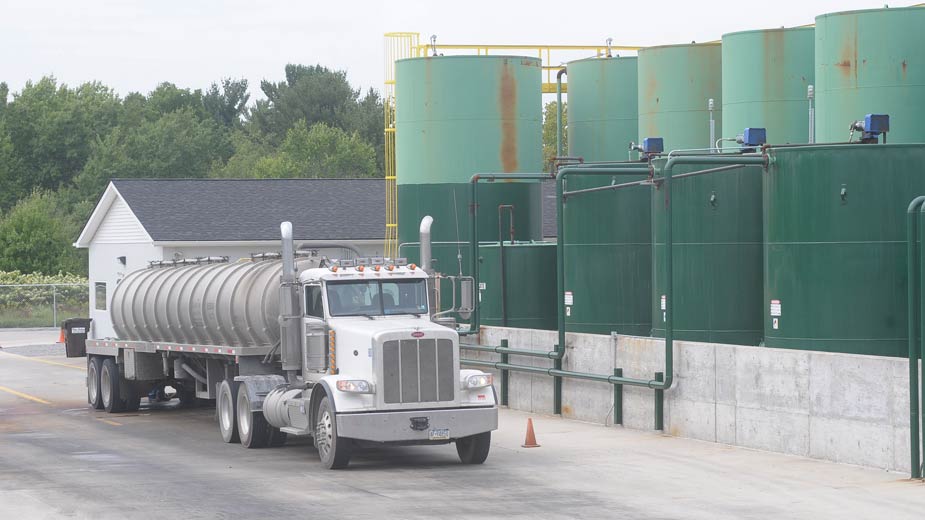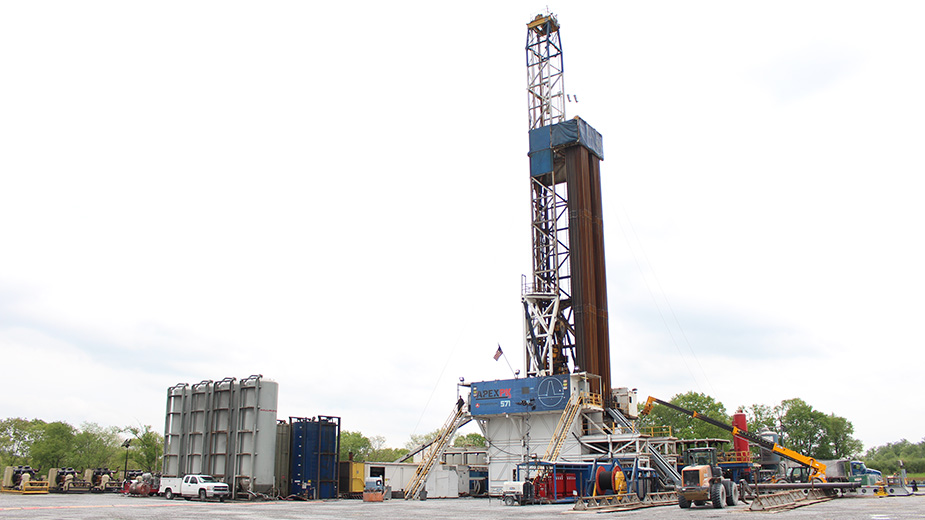Injection Well Activity Surpasses Peak in 2011
YOUNGSTOWN, Ohio — Oil and gas exploration in the region has slowed over the past three years, but the quantities of wastewater deposited in Class II injection wells is on the rise.
In 2016, disposal wells across Mahoning County accepted more wastewater from oil and gas drilling and production operations than any year over the past six, state records show.
Last year the five active Class II injection wells operating in the county received 648,196 barrels of hydraulic fracturing and production wastewater from wells mostly in Pennsylvania, reports the Ohio Department of Natural Resources.
This is more contaminated wastewater than Mahoning County took in during 2011, when exploration for oil and gas across the Utica and Marcellus shale plays in Ohio and Pennsylvania was just hitting its stride. That year, the county accepted 615,711 barrels.
Moreover, last year’s volume is almost four times the volume handled just a year earlier. In 2015, Mahoning County recorded just 167,742 barrels of wastewater injected into Class II wells.
Injection well activity in the Mahoning Valley abruptly came to a halt after an earthquake that registered 4.0 on the Richter scale struck Dec. 31, 2011. The quake and at least seven others earlier that year were tied to an injection well in Youngstown – then operated by now-defunct D&L Energy.
The quakes led to a shutdown of all injection well activity nearby, including former D&L wells in Coitsville and Girard. Another D&L well in North Lima – the Northstar Lucky #4 – was drilled but never placed into operation.
Since then, however, injection well operations have restarted in earnest across the Mahoning Valley.
The Northstar #4 well – just off state Route 7 in North Lima – was part of a sale of D&L’s assets through U.S. Bankruptcy Court in 2013. In October 2015, the well, now owned by Bobcat Energy LLC, reopened and started to accept wastewater from hydraulic fracturing operations.
This operation has since dominated the injection well business in Mahoning County, accounting for nearly 80% of fracking waste disposal in the county, records show.
Of the 648,196 barrels of wastewater trucked into Mahoning County in 2016, the North Lima well accepted 513,317 barrels, or 79.1%. Significantly, 88% of the waste taken to that well – 454,468 barrels – was trucked in from out-of-state.
Records show that the wastewater disposed of here didn’t have to travel far.
According to the Pennsylvania Department of Environmental Protection, Hilcorp Energy Co.’s wells in neighboring Lawrence and Mercer counties kept the North Lima operation busy throughout 2016.
The DEP records 42 injections of wastewater into that well produced from Hilcorp’s Mercer County wells that total 164,639 barrels.
Hilcorp wells in Lawrence County injected 40 loads in 2016, or 173,078 barrels, according to the DEP.
Together, the Lawrence County and Mercer County wells account for 337,717 barrels of wastewater taken to the North Lima operation, or 74.3% of all out-of-state waste injected at the well, government records show.
Owners of the well in North Lima are also working on a plan to restart the Collins #6 injection well in Coitsville Township, another former D&L well that closed after the 2011 quakes.
Four other wells in Mahoning County posted far smaller injection numbers, according to data.
White Energy’s disposal well in Green Township accepted 36,718 barrels of in-state waste while Brineaway’s three disposal wells in Smith Township accepted 98,961 barrels, all of it generated from wells in Ohio.
To date, there have been no complaints about the Mahoning County wells or others that have ramped up operations in the Mahoning Valley since 2011.
And in Trumbull County, the injection well activity is also showing signs of new life.
Small seismic tremors were detected at American Water Management Services’ deep well in Weathersfield Township in 2014 and that operation remains shut down per the direction of ODNR’s oil and gas chief, Richard Simmers.
However, a Franklin County Common Pleas Court recently ruled that the well should be reopened, citing “no factual basis” to keep the well closed.
ODNR granted permission for injection to begin at a Class II well near the Youngstown-Warren Regional Airport in Vienna Township. And more recently, Pittsburgh-based Seneca Resources applied for permits for two wastewater disposal wells in Brookfield Township.
While local governments lack jurisdiction over disposal wells in their respective communities, the industry has nonetheless spurred concern among local officials and residents.
“There’s a lot of movement in this industry in the Valley,” observes Phil Pegg, a Vienna Township trustee who has questions about the safety of these wells.
The well in Vienna, for example, started injection operations in September and Pegg is concerned about its proximity to the airport along state Route 193. He has questions about why a new drilling rig was moved onto the site along with a truck from Compliance Services, a cleaning company.
ODNR has said that the rig was moved in for maintenance purposes.
Pegg suspects the rise in injection well activity is tied to rising oil and gas prices.
“It runs in cycles and it’s starting to turn around,” he says. “People think I’m anti-gas and oil. I’m not. I just want them to do it safely.”
A total of seven wells reported injection activity during 2016 in Trumbull County, data shows, taking in 481,362 barrels of wastewater – 473,410 barrels of which were produced from oil and gas wells out- of-state.
Pictured: A truck disposes of fracking waste at the North Lima injection well off Route 7.
Copyright 2024 The Business Journal, Youngstown, Ohio.



